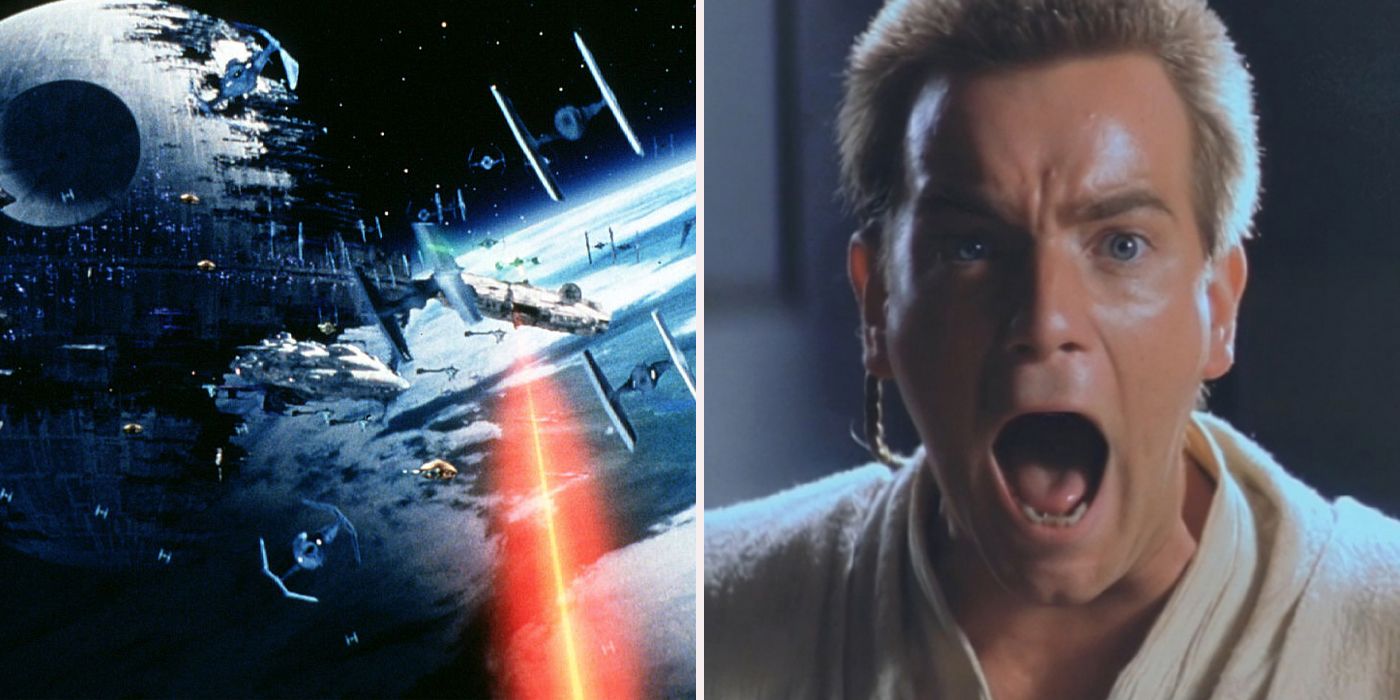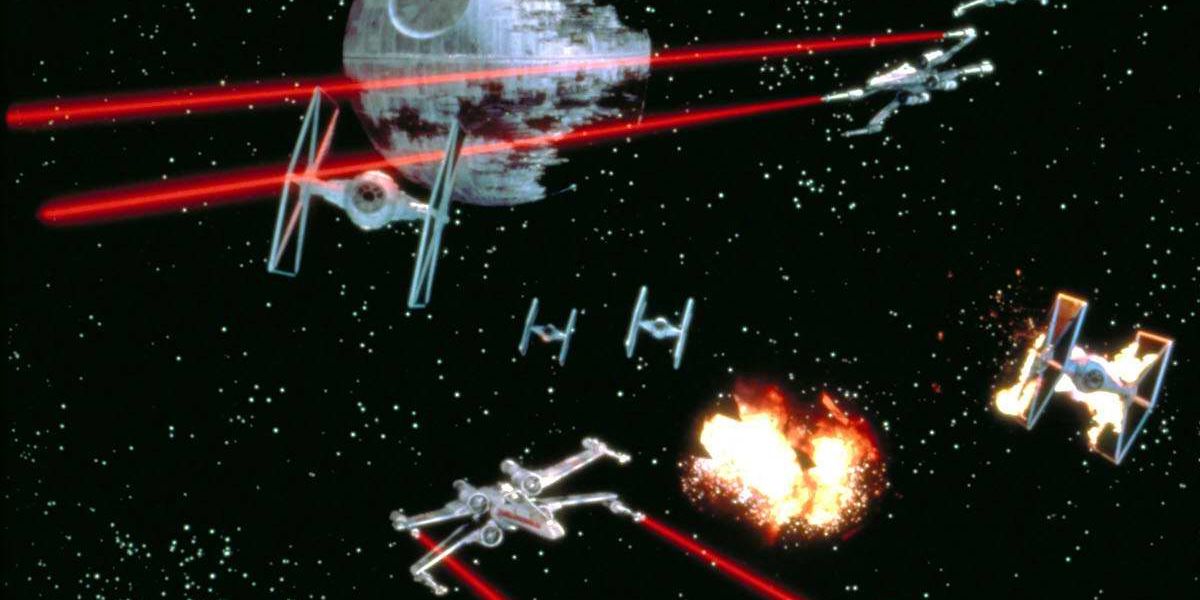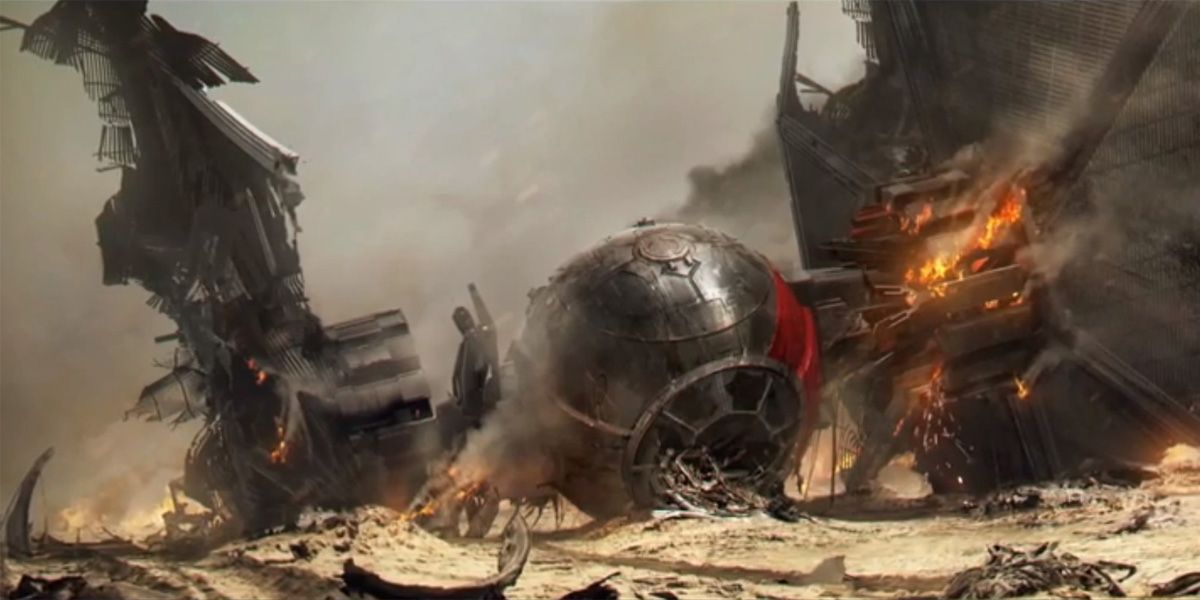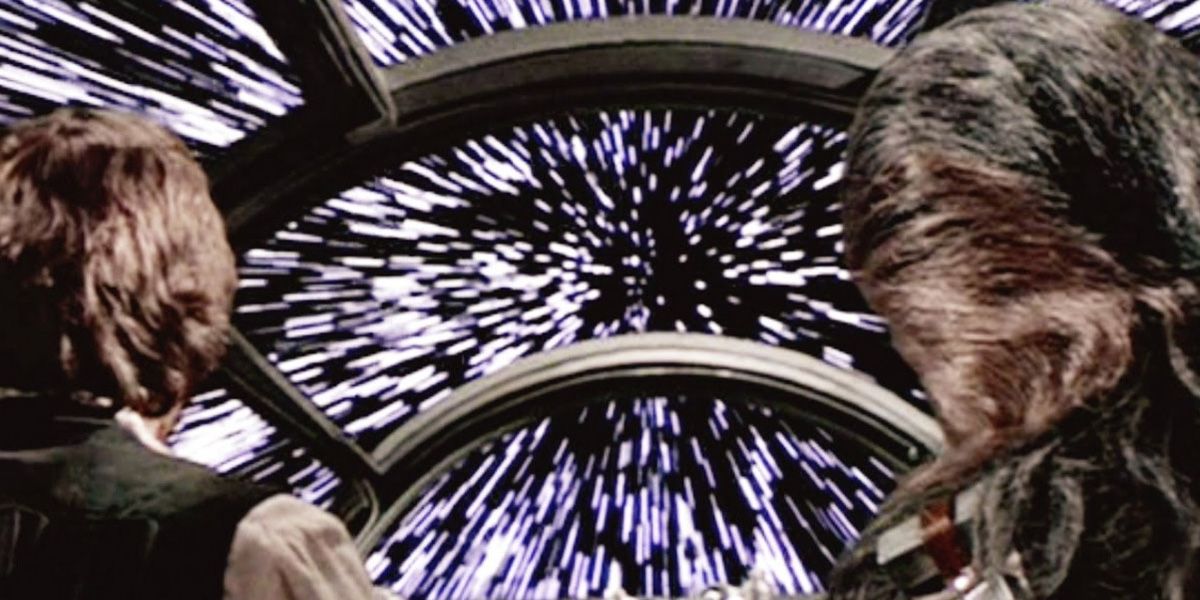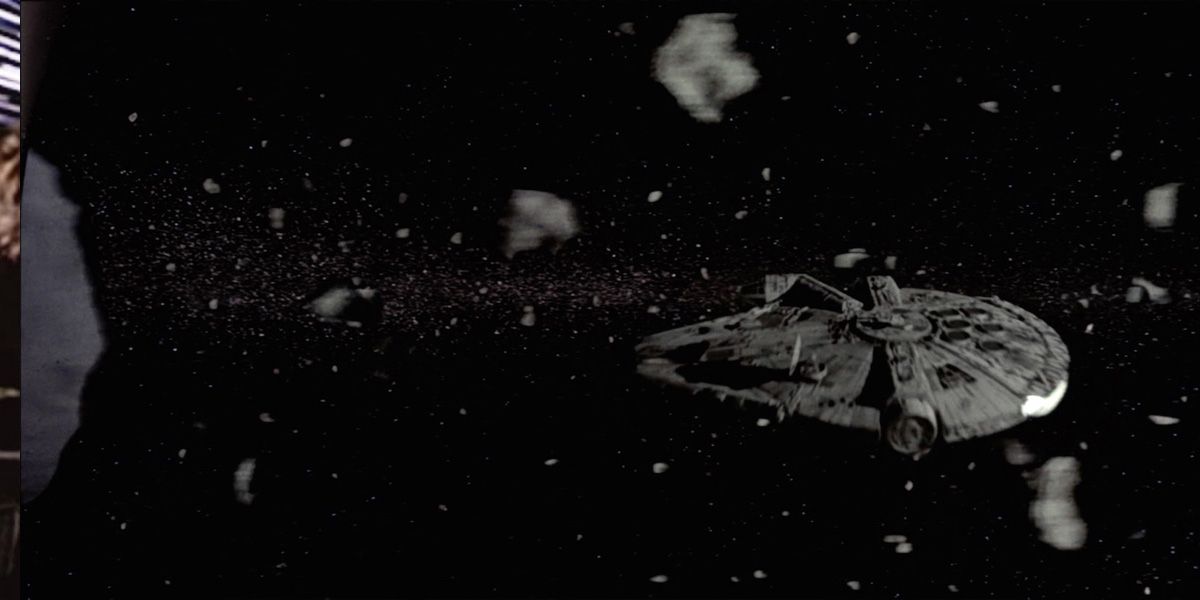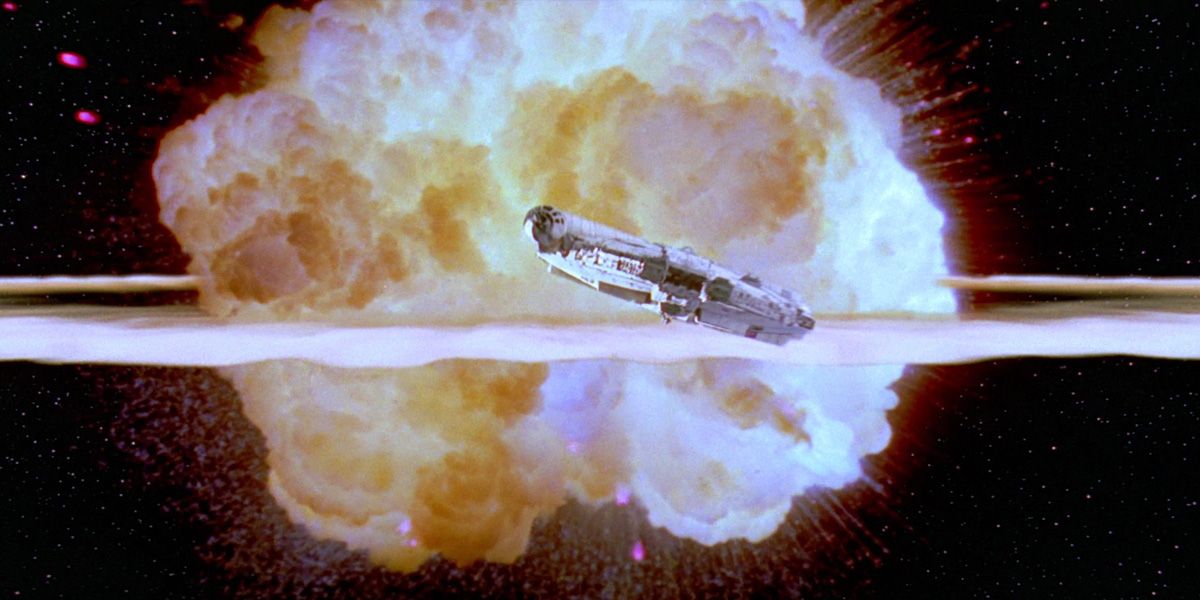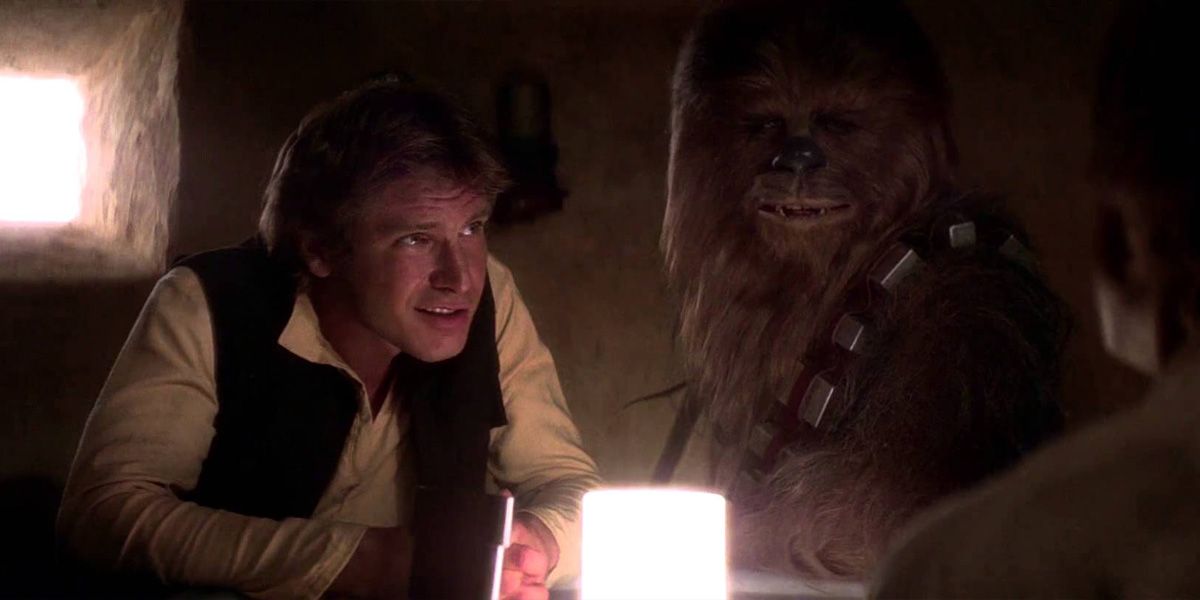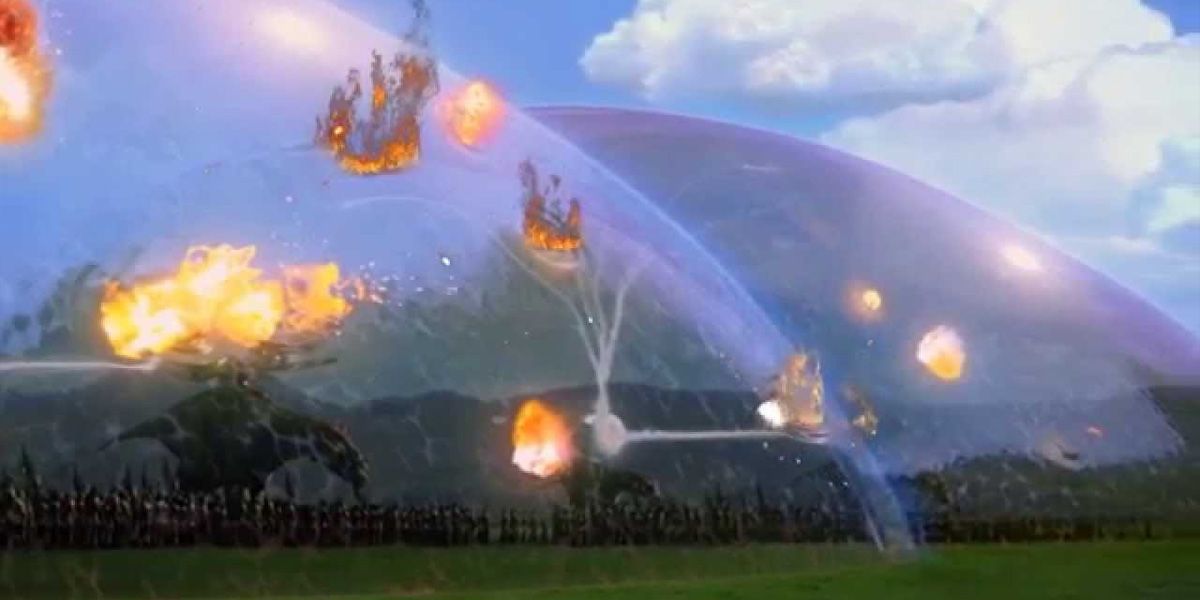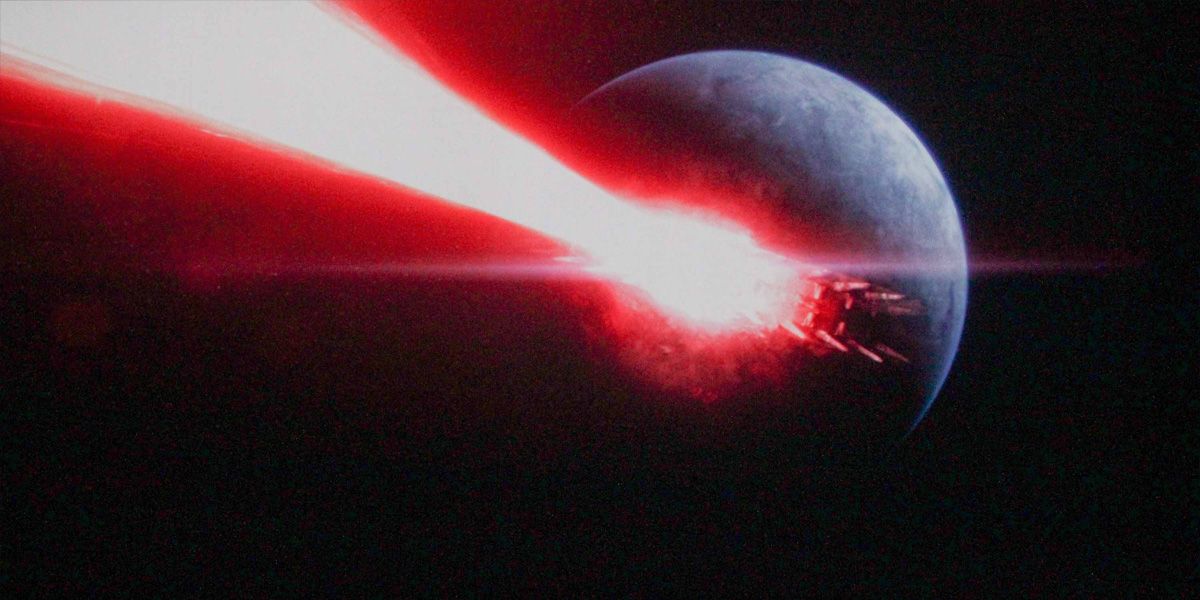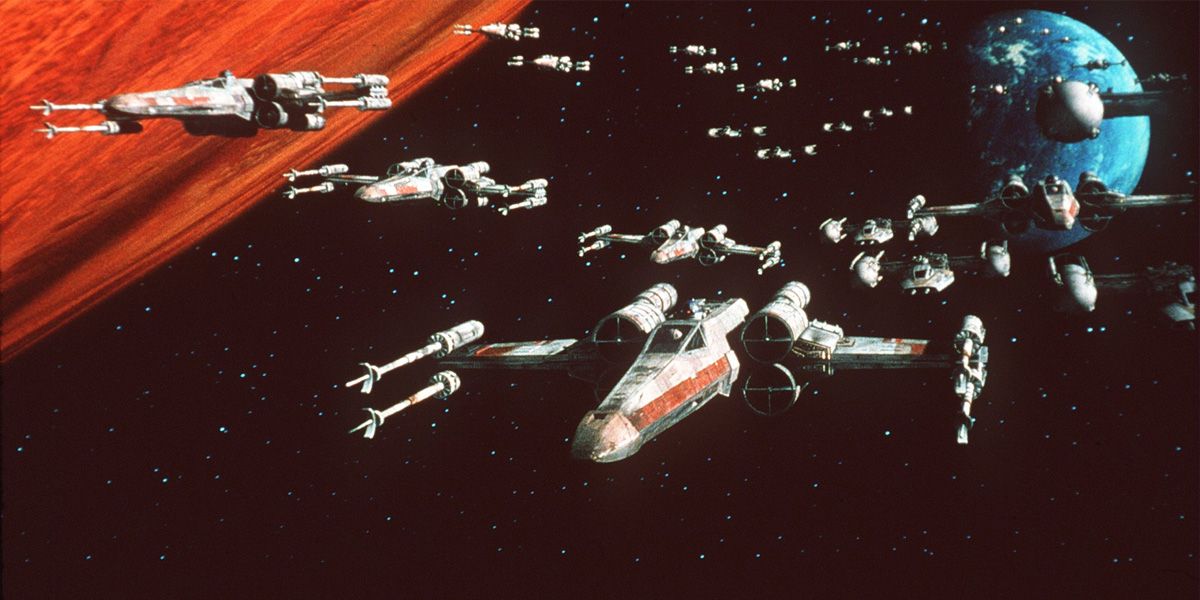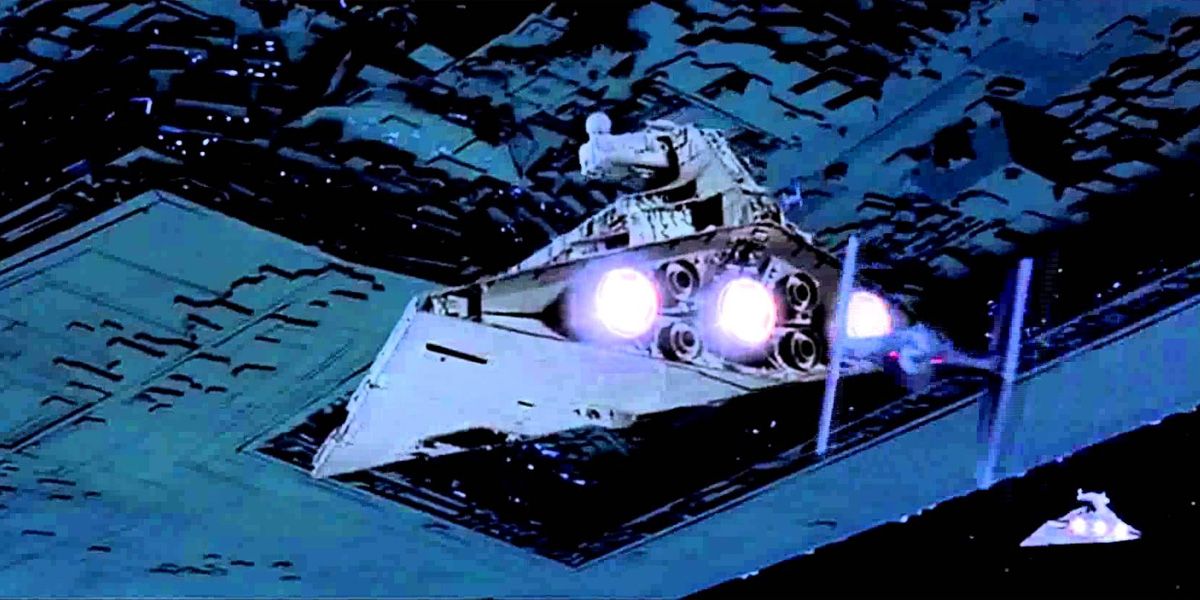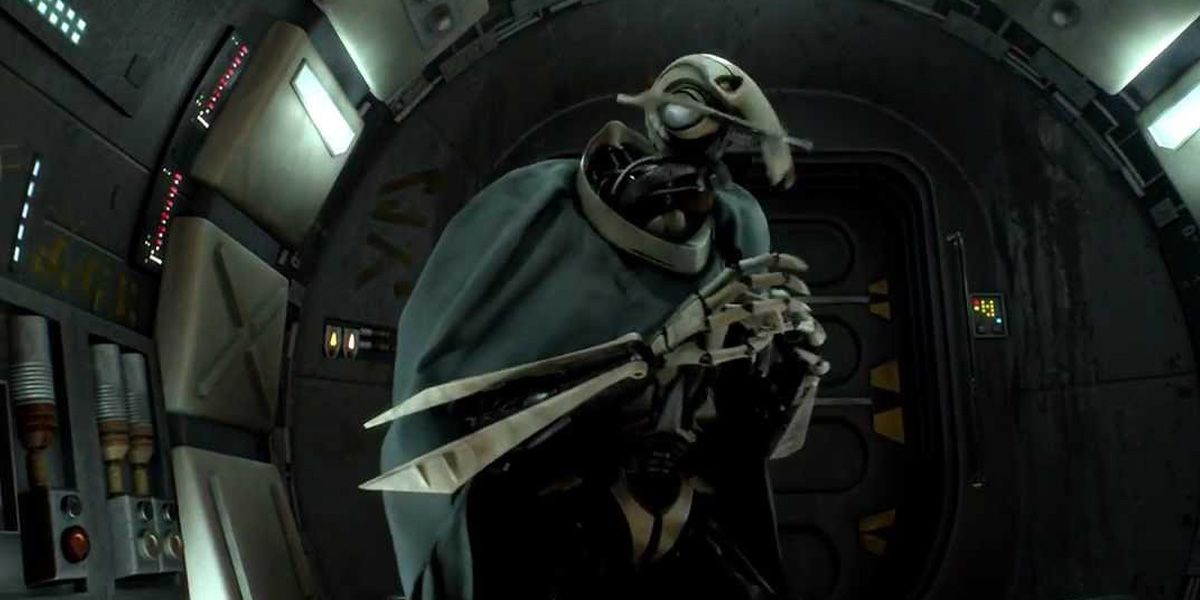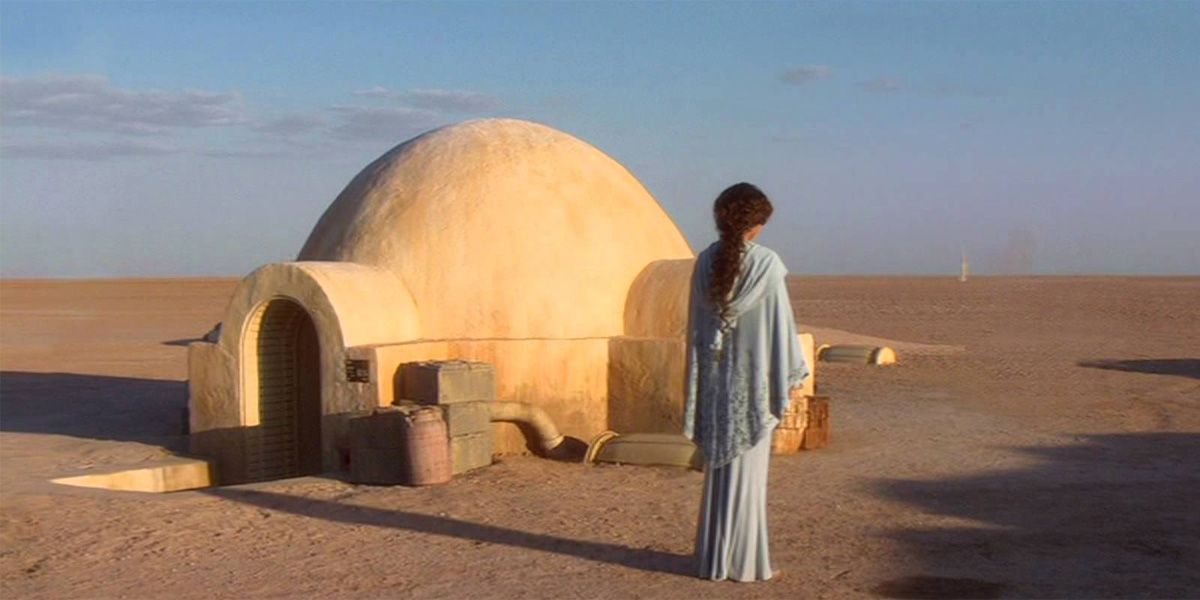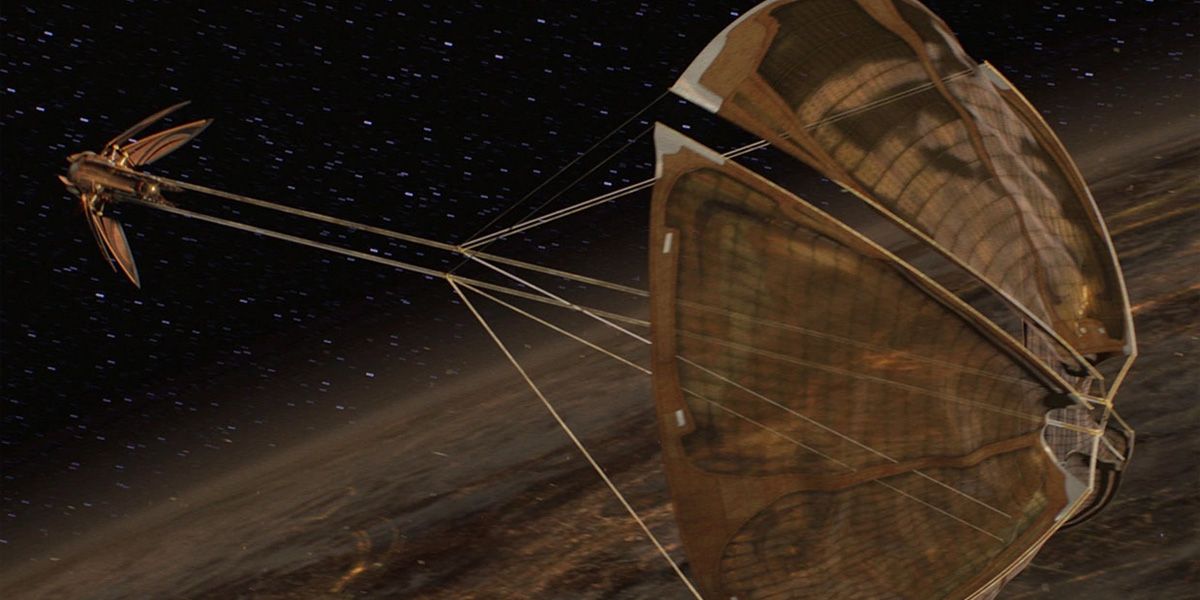One of the most successful science fiction franchises of all time is Star Wars. Although the first Star Wars movie hit theaters way back in 1977, fans still clamor for new movies every year. Its success makes sense: who doesn't love watching big space battles where good vs evil blast at each other with that signature "pew pew" sound?
However, there's a long-held argument that Star Wars is more fantasy than sci-fi. This is mostly due to the fact that a lot of the science in the Star Wars films makes no sense.
This doesn't mean that the movies aren't entertaining, but for those familiar with astronomy and physics, many scenes are downright cringeworthy in just how wrong they are. Scientists such as Neil deGrasse Tyson continue to point out all of these scientific errors, much to the chagrin of diehard fans.
The most erroneous scenes of Star Wars, though, involve space and how physics and matter operate in the vacuum of this environment. Sure, those spaceships dogfighting in a sea of stars look really cool, as do all of the explosions and sounds, but the truth is that these scenes are highly inaccurate when it comes to actual science.
Here are the 15 Facts Star Wars Gets Completely WRONG About Space.
Weapons that shoot fireball-like projectiles would not work in space
One thing that Star Wars gets wrong about space is the way that its battles are depicted. Sure, it looks really cool when a spaceship explodes into a fiery ball, but that's just for show, because in the vacuum of space where there is no atmosphere, fireballs are not likely.
"The ships must contain oxygen for their occupants to breathe," Michael A. Dexter of Ape Culture writes. "Also, fire requires oxygen to burn. Typically, when a Star Wars ship is hit, it explodes and burns brightly for several seconds. In reality, the available oxygen would be used up almost instantly, and the fireballs would be snuffed out almost immediately. Instead of a brightly-burning fireball, you’d probably see a brief flash followed by pieces of the ship flying off in all directions."
This means that the weapons that blast fireballs would have the same problem. No oxygen in space means that fire is not possible.
Spaceships wouldn't fall down when hit
Something that George Lucas and Star Wars filmmakers seem to forget often is that there is no gravity in space. That means that, if a spaceship gets hit in space, it's not going to fall down because there is no gravity. Yet, it happens often in the movies: a ship gets hit, falls, and usually crash lands on a planet.
When a group of astronomers got together to watch the Star Wars movies for The Daily Dot, they found these scenes laughable.
"That’s right," Cynthia McKelvey writes. "Gravity’s not really a thing in space. Even when the ships are fighting above a planet, it doesn’t make sense that a ship would suddenly fall straight down toward the planet as if it suddenly realized the planet has gravity. The ship should, if anything, be pushed in the direction of the impact."
Hyperdrive is scientifically impossible
Hyperdrive is a nice concept and all, and it comes in handy when characters in a movie need to traverse a great deal of space in a short amount of time. Everything in space is already so far apart that it makes sense that spaceships need a way of traveling faster than the speed of light to get from point A to point B.
The only problem is that something like hyperdrive is theoretically impossible because it involves traveling through hyperspace.
"Hyperdrive allows you to access hyperspace— that’s a whole other dimension," University of Berkeley astronomy graduate student Chelsea Harris says. "In terms of the science, that’s pretty hypothetical.”
In addition to this, based on current scientific knowledge, faster than light travel still isn't theoretically possible.
The asteroids in asteroid fields aren't grouped so close together
One of the most nail-biting moments in many sci-fi movies is when a spaceship gets caught in an asteroid field and must carefully traverse the field without crashing into large pieces of rock. Watching Han Solo carefully navigate the Millennium Falcon through an asteroid field where there are a lot of near-misses always keeps viewers on the edges of their seat.
Except, in reality, asteroid fields don't really look like this. Real asteroid fields are more spread out, meaning that the asteroids are not really grouped that close together. Asteroids are usually pretty small, too, meaning that a spaceship could easily move around an asteroid field.
“If you’re going through the Main Belt of asteroids between Mars and Jupiter in our own solar system, it’s unfortunately not at all like that movie,” astronomer Carrie Nugent says to Inverse. “There’s a lot of asteroids there, but they’re very small and they’re very spread apart.”
You can't hear explosions (or any sound) in space
Star Wars is not just a visual treat for the eyes, but it is also an audio adventure for the ears. From the "pew pew" sounds that blasters make to the large booming explosion of the Death Star, sound is an important part of each film in the franchise.
For example, imagine the scene of the Death Star exploding, but instead of the loud boom, it's silent with no music or sound. There's just an explosion (which probably wouldn't look as fiery, considering the lack of oxygen in space that fire requires to burn), but it's not audible. That's the reality of space: the vacuum of space means that nothing makes any kind of noise at all within it.
Sound waves travel by making molecules vibrate. In space, though, there are no molecules for sound to vibrate off of.
You can't see the path of a laser beam
Anyone who has ever used a laser pointer to entertain their cat is pretty aware of how a laser works. After the laser gets activated, a small dot appears where the laser beam gets scattered by a surface. The laser beam itself is not visible, and if it does not strike a surface, there is nothing to see at all.
Yet, in Star Wars, lasers clearly have long beams that extend from the devices that emit them.
"The only way you would see a laser being fired between two ships is if the air were full of large particles (dust, water droplets, etc)," The Collapsed Wavefunction writes. "If that were the case the lasers would do no damage-- all the laser light has been scattered."
There is no way to make the Kessel Run in less than 12 parsecs
When Han Solo bragged about the Millennium Falcon, either he was mistaken or just outright lying. In A New Hope, he said that he made the Kessel Run in "less than 12 parsecs."
A parsec is a measure of distance, not of time. Star Wars fans tried to explain this, though, by saying that the Kessel Run involves passing through an area of space full of black holes-- more powerful ships can take a more direct route through that region.
"So Han's ship was able to make it through an area of space full of black holes using a path under 12 parsecs," The Collapsed Wave Function writes. "Makes sense, right? The problem with this explanation is that parsec is a measurement of distance used in astronomy, and they only care about very large distances. 12 parsecs is about 40 light years. Even assuming faster than light travel, that's a stretch that the fastest route through a black hole mine field is that long."
Invisible force fields could not stop visible laser beams
Several Star Wars movies have shown battle scenes that involve both laser beams and invisible force fields. The bad guys usually drive up in their war machines and try to shoot at the good guys with lasers. However, the good guys typically have force fields that protect them from the laser beams, which usually just bounce off the invisible force field.
Invisible force fields aren't necessarily the stuff of fiction. Scientists even think that Earth has an invisible force field surrounding it that protects it from "killer electrons." That's no stretch of the imagination.
However, lasers are light, and light is visible. Anything that stops visible light will stop a laser. Something that is invisible would not stop lasers, though, which are light. Because light-- and therefore lasers-- would pass through invisible things, they could easily pass through force fields.
Sucking all of a star's energy into a planet would destroy that planet
A weapon that can take out a planet would require a lot of energy. Fortunately, Starkiller Base has a unique way of collecting that energy and directing it towards a planet it wants to destroy.
Apparently, at least according to the movies, Starkiller Base is very accurate. How does it work? According to The Force Awakens, it absorbs the energy of a star into its core. There's just one big problem with that...
A planet (or in this case, a weapon that is basically a planet) could not possibly store that much energy from a star without serious side effects. Superstar astronomer Neil deGrasse Tyson points this out on Twitter, noting the following: "In @StarWars #TheForceAwakens, if you were to suck all of a star’s energy into your planet, your planet would vaporize."
Some of the habitable planets really aren't habitable
The so-called habitable planets of Star Wars aren't only simplistically depicted, but also potentially uninhabitable. For example, Tatooine is a planet covered in nothing but desert. Although such planets do exist, the fact that Tatooine doesn't seem to have any water on its surface makes it a lot more difficult for colonization.
This means that there is no moisture for moisture farmers such as Owen Lars to harvest. No water generally means no life. Also, let's not even get into the supposedly breathable gaseous giant, Bespin, the home of Cloud City, where humans certainly could not survive without oxygen.
The Forest Moon of Endor is also highly unlikely, since a planet situated so close to a gas giant would probably have a more varied terrain.
Battle-ready spaceships would require an impossible amount of fuel
One of the biggest challenges for NASA and other space-faring agencies is having enough fuel to power rockets and shuttles. This is one of the many discussions now taking place just to send a manned mission to Mars.
It takes an insane amount of fuel just to launch a rocket into orbit. One can only imagine how much fuel a tie fighter or X-wing would require not only to function, but to also engage in combat.
In fact, the amount of fuel needed would be so much that it's highly improbable that those ships could ever exist. However, in the Star Wars universe, fuel to power spaceships is an unlimited resource.
"Fueling space ships is one of the most difficult things about space ships,” Harris says. “It’s the land of infinite fuel.”
Ships move a lot slower in space
Watching spaceships zip around in space in Star Wars is quite the spectacle. The dogfighting-inspired scenes of battles is especially thrilling, with ships darting in and around the enemy at a dizzying pace.
It looks great onscreen, but it's highly inaccurate of how ships would really move and participate in combat in space. The truth is that these ships would move a lot slower in space. For those who have ever seen the TV series The Expanse, that's generally a more accurate depiction of space battles.
It takes a really long time to turn around (there are no hard-banked turns in space) and it takes even longer for combat to take place because, realistically, ships would be a lot farther apart, meaning that it would take longer to actually engage an enemy.
When a ship loses gravity, the people inside would float around, even when falling toward a planet
There is a scene at the beginning of Revenge of the Sith when Obi Wan, Anakin and the Chancellor are in a spaceship under attack. They get hit and the ship loses its gravity and starts to tip towards a planet. There is a huge problem with this scene.
"The ship was in orbit, so there is no up or down!" Phil Plait of Bad Astronomy writes. "I have to assume they have some sort of artificial gravity, and they lose it. But then everyone should float! Instead, it's depicted like a room that's tilting. Even R2 (who has thrusters in his feet, as I recall) starts to slide along the floor."
Think about all the photos posted of astronauts floating around in space: there is no force on anything in space, so they're "falling around" the Earth.
People would possibly have two shadows when on Tatooine
Tatooine is a planet that orbits two stars, right? So why does everyone only have one shadow when they're standing on the surface of the planet. This one seems like a no-brainer, but it's a blatant oversight of how things work. Here's how Plait explains it:
"If the stars are very far apart in the sky you'd get two distinct shadows; but we know they were close together from other scenes," he writes. "Surprisingly, if the stars are close together you might not see two shadows, but rather a fuzzy, somewhat indistinct shadow. This is because the stars are not point sources; that is, they have an actual size."
Basically, even in a situation where there is only one shadow on Tatooine, it should not appear as clear and crisp as what viewers see in the movies. Additionally, if those stars are farther apart than they seem on film, everything would have two shadows.
Count Dooku's solar sail ship should be really slow
When Count Dooku departs from the planet Geonosis in Attack of the Clones, he leaves in a solar sail ship. Sure, it looks really cool on film, but there is no way that this ship would move that fast in reality. Although these solar-powered ships are still only theoretical, the idea of a spaceship using light to act as a sort of "wind" to power it is possible.
"Solar sails accelerate very slowly," Plait writes. "It might take weeks or months to get up to a reasonable speed to move between planets. Dooku uses one to travel to another star system. I hope he's not in a hurry! It'll take decades at least to get to another star. Padme mentions that Coruscant is 'halfway across the galaxy' from Geonosis, so that journey by sail would actually take thousands or even hundreds of thousands of years. Dooku better pack an in-flight snack."
---
Can you think of any other things about space that they got completely wrong in the Star Wars movies? Let us know in the comments!

